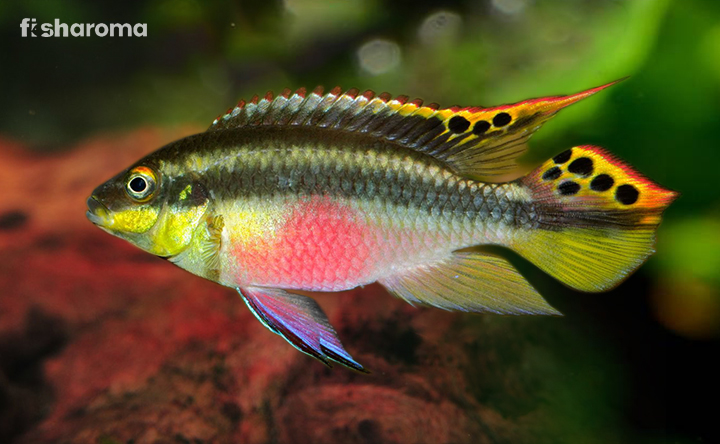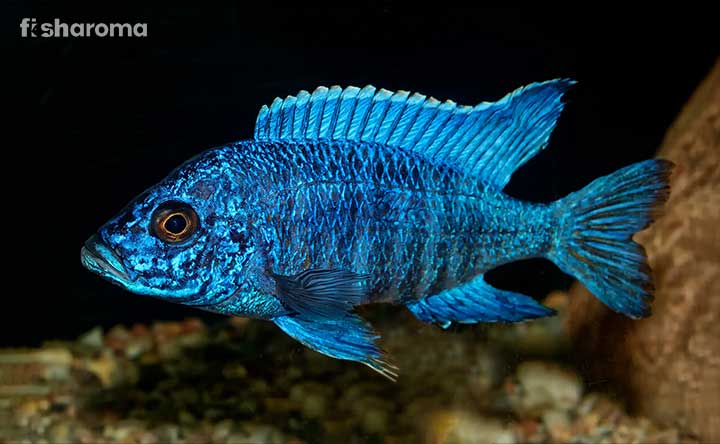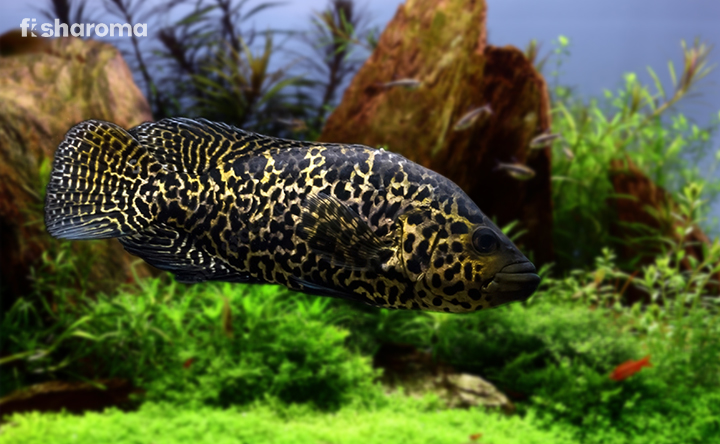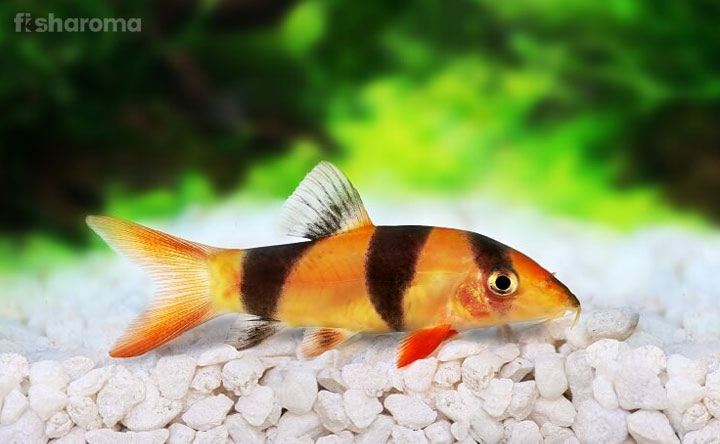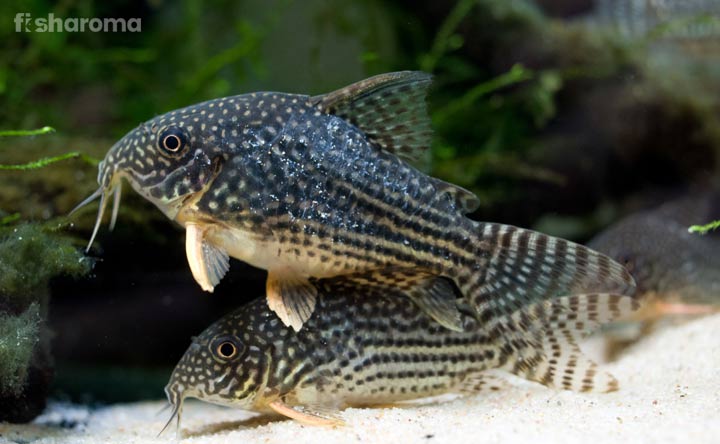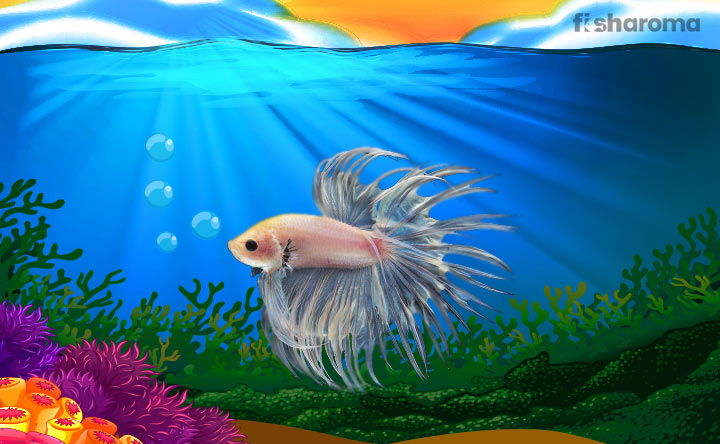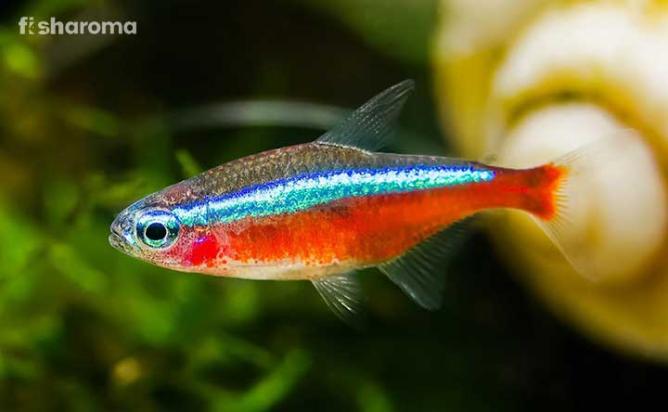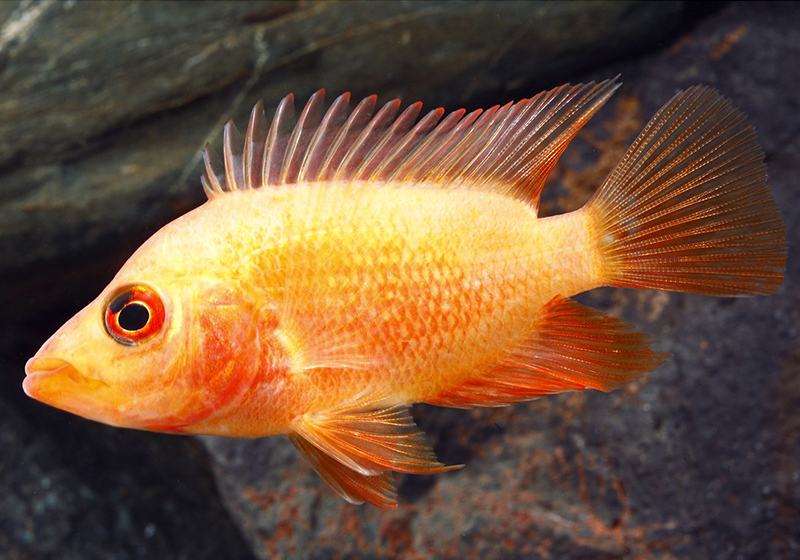10 Types of Oscar Fish – A Sneak-Peak into their Lives

Despite the highly aggressive and territorial behavior of the Oscar fish, they are always in demand due to their graceful swimming style and gorgeous appearance. If you are a fishkeeper and have freshwater aquariums in your household, we are sure that hosting them has undoubtedly crossed your mind. They are an incredibly diverse species that have multiple variants. So, let’s see how they are different from one another and which one is more suited for you. This space is your gateway to a sneak-peek to ten of the most mesmerizing types of Oscar fish out there. Let’s get to know them up and close.
Oscar Fish – An Overview
Members of the Cichlidae family, Oscar fish are tropical creatures that are native to South America in the Amazon River Basin, the Rio Paraguay, the state of Parana, and the Rio Negro. They are famous for their magnificent appearance and intriguing personality. Their scientific name is Astronotus ocellatus.
These freshwater beauties have oval-shaped bodies and large thick lips and grow up to a size of 12” (33 cm) on average. Proper care can help them survive up to 10 years.
They come in a wide range of colors with prominent patterns and spots on their bodies. Some of the most popular types of Oscar fish have been stated in this article. They are highly territorial and have an aggressive demeanor. This places them pretty low in the compatibility factor. They spend their time at the mid-level of the tank and are often seen sifting through the water substrate in search of food.
Having an omnivorous diet, Oscars eat almost everything you provide them. Due to them being large-bodied aquarium fish, they are messy eaters and would require regular cleaning of the tank and replacement of the tank water so that their captive environment doesn’t get contaminated. In addition, breeding them is extremely difficult.
Oscar fish are recommended for experienced fishkeepers only due to their high maintenance.
Types of Oscar Fish
There are a bunch of different types of Oscar fish in the wild. Although initially, there were three major ‘parental’ types of Oscar fish available for aquarists to rear – Red Oscar Fish, Tiger Oscar Fish, and Albino Oscar Fish, overtime a bunch of different crossbreed variants have also emerged, each having a distinct look to them.
Red Oscar Fish

One of the most iconic variants of Oscar fish, Red Oscar fish has a splendid appearance and are distinguished by their bi-colored bodies. Having a mix of fiery red and black, there is a seamless beauty to them that emerges from the merge of these two colors. They have a velvety texture to their bodies.
Their eyes slightly protrude above their heads, and they have an orange rim to them. Usually, all of their fins are black. They typically are 12-15” (30-38 cm) long and have a lifespan of 3-5 years.
Tiger Oscar Fish

Tiger Oscar fish are probably one of the most well-known types of Oscar fish. Apparent from their name, they are identified by the tiger-like patterns on their bodies. Having a black body, they have orange, crimson, or bright red patterns all over. Sometimes, dark bands can also be seen towards the base of their bodies.
The striking appearance of a Tiger Oscar fish makes them seem like lava rocks that are moving across your freshwater aquarium. Similar to Red Oscar fish, they also grow up to a length of 12-15” (30-38 cm).
Many breeds of Oscars have originated from this variant. Since they are one of the original breeds of Oscars, you won’t find any anomaly in them.
Albino Oscar Fish

As evident by their name, Albino Oscar Fish are white in color. Having a smooth texture, they sport bright white scales. This is the third and final parental type variant of Oscar fish, along with Red Oscar Fish and Tiger Oscar Fish.
It should be noted that they are not entirely white since you can see orange or reddish lattices closely intertwining in the lower region of their bodies. The complexity and density of these patterns vary from individual to individual. In fact, it is said that no two Albino Oscar fish have the same pattern. They also have a velvety texture to their bodies.
The white color is due to the lack of melanin in their bodies. However, albinism doesn’t affect few color cells, such as carotenoids, which are responsible for the orange and red color, and xanthophores, which are responsible for the yellow color. This is why Albino Oscar fish can still retain their orange and red tinges while losing the darker hue from their bodies.
Black Oscar Fish

Another stunning variant, the Black Oscar fish have black bodies with light, pale bands running all across. In a few specimens, you can even see a lighter-colored belly.
This variant also has tiger-like patterns that decorate their scales. Similar to an Albino Oscar fish, the patterns in a Black Oscar fish are also unique from individual to individual. They have black-colored fins and orange-rimmed eyes.
Having a light-colored substrate in the aquarium that hosts the Black Oscar fish helps in highlighting their presence even more. This is one of the crossbreed variants of Oscars.
White Oscar Fish

White Oscar fish are not to be confused with their Albino cousins. In the case of White Oscars, the trademark orange color is missing, and instead, dull shades of pink can be seen. The pink pigmentation blends so evenly and subtlety that it seems that their entire body is white from head to tail.
Similar to the Black Oscar fish, the White Oscars are also a crossbreed variant.
They have an angelic presence to them and help in bringing an ethereal dynamic to your freshwater aquarium. To highlight them in a prominent fashion, include a dark-colored substrate in your aquarium.
Lemon Oscar Fish

Lemon Oscar fish sports a yellow gradient over a white body. Since the yellow pigmentation is very subtle in some specimens, they are often confused with a White Oscar fish or Albino Oscar fish. This also goes on to state that some individuals have bright yellow patterns on their bodies, while others have saturated yellow patterns. The Lemon Oscars are one of the many crossbreed variants of Oscars.
Their territorial temperament is also much subtle than most other members of the Cichlidae family. However, don’t let that fool you. They will eat up anything and everything that fits their mouth. They are also known for forming nuclear families.
Green Oscar Fish

No, this isn’t out of fairy tale! Green variants of Oscar fish do exist and they are as extravagant as they sound. The Green Oscar fish comes with some of the most intricate patterns and colors that you can think of. It is a crossbreed variant.
Apart from green, shades of yellow and black can also be seen in their bodies. You will spot yellow scales and dark green bands across their bodies as well. In some specimens, yellow-colored circle-like shapes can also be seen.
They are rare and hard to find, which is why they are almost treated like royalty in the fishkeeping world.
Blue Oscar Fish

Next in our list of the most mesmerizing types of Oscar fish is the Blue Oscars that are a crossbreed species. They are identified by the contrasting shades of blue in their bodies.
In the case of Blue Oscar fish, the patterns are entirely different than what is seen in other types of Oscar fish. These patterns stem from a connected system of channels that are dominated by brighter shades of blue instead of a disjointed mesh-like presence. You will also see lines of dark blue, which makes them pop out even more.
The structure of the pattern and the shades of blue vary from specimen to specimen.
Veil Tail Oscar Fish

Apparent from their name, the most prominent feature of Veil Tail Oscar fish is their tail, which is longer than what seen in other types of Oscar fish. Besides, there’s a see-through threadlike aspect to their tails which contributes to their overall appeal.
Generally, they sport a black body, although specimens with different colors are also seen. You will also see prominent bright orange spots on their tail that run up to their heads. Instead of dots, there are orange lines on their bodies.
Whenever they expand their tails, it creates a beautiful imagery, which is a sight to behold.
Florida Oscar Fish

As Oscars have been introduced to various parts of the world, regional variants have popped up with their distinct characteristics and traits. Famous among them is the Florida Oscar fish, found in Florida, USA. They can be seen in places such as Miami Lakes, Everglades, Tamiami trail, among others.
Appearance-wise, this crossbreed variant is pretty much similar to a Tiger Oscar fish. What separates them from the rest are the changes that they have imbibed through their diet. The quality and consistency of what they consume affect their appearance.
They have dark-colored bodies clubbed with orange rings on their dorsal and caudal fins. They are known for their ability to alter their appearances. In their juvenile stage, they have white and orange wavy stripes on their bodies along with spotted heads.
Summary
Oscar fish are splendid creatures that are known for their highly-aggressive demeanor and territorial nature. Yet, that doesn’t stop fishkeepers from petting them since their magnificent appearance more than makes up for it. Besides, they are very diverse when it comes to their appearance.
There are both parental and crossbreed versions of this fish that are popular among aquarists across the globe. The different types of Oscar fish – whether it’s the Tiger Oscar fish or Albino Oscar fish, the Red Oscar fish or the Veil Tail Oscar fish – bring with them a distinct dynamic to your freshwater aquarium. So, study their care guide and bring them home. But, if you are a newbie, you better wait out and gain experience with other fish before petting Oscars since they are challenging to care for and are recommended for experienced aquarists only.
A Look at Similar Fish-based Articles
Let us take a look at some of the other types of various fish-based articles.
- Types of Betta Fish – One of the most beautiful freshwater fish in the world, get to know the various variants of this fish from this space.
- Types of Parrotfish – If you are looking for saltwater fish, then perhaps Parrotfish would interest you. Find out about their different variants from us.
- Types of Goldfish – People have been petting them for centuries now. But do you know about their different variants? Take a look here.

